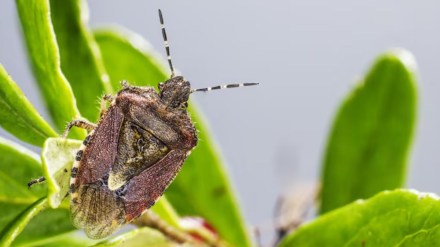Chagas disease cases on rise in the US: A little-known parasitic disease is spreading in the United States and health officials are raising concerns. The disease, known as Chagas disease, is being detected more frequently in states such as California, Texas, Florida, Arizona, and Louisiana. A new study published in the CDC journal Emerging Infectious Diseases found human cases in eight US states and recommended classifying the disease as endemic, meaning it has a constant presence in these regions.
“Acknowledging the endemicity of Chagas disease in the US is crucial for achieving global health goals,” the study’s authors said. According to the CDC, endemic diseases maintain a “baseline” level in a community, showing that Chagas is no longer just an imported condition, it is becoming established in parts of the US.
What is Chagas disease?
Chagas disease, also called American trypanosomiasis, is caused by a parasite named Trypanosoma cruzi. It spreads primarily through triatomine bugs, commonly known as ‘kissing bugs.’ These bugs feed on human blood and can leave infected feces near the bite, eyes, or mouth, allowing the parasite to enter the body.
Dr. Norman Beatty, lead author of the CDC study, explained, “Sometimes it can ‘poop’ on our skin or mucous membrane while feeding, and then the parasite enters at that site. The bug’s feces can also end up inside or near a home and be incidentally ingested or rubbed into the skin or mucous membrane.”
Originally, Chagas was common in South and Central America. Now, it is spreading among animals and humans in parts of the Southern United States. Its silent nature makes it particularly dangerous, as most people are unaware of the risk.
Why is Chagas disease spreading?
Dr. Suranjit Chatterjee, Senior Consultant, Internal Medicine, Indraprastha Apollo Hospitals, explained the factors behind the spread. He said, “Chagas disease is no longer just a Latin American problem. It is now being detected in the United States, Canada, Europe, and even parts of Africa and Asia. The main factors include increased travel and migration from endemic regions, urbanisation and changes in the habitats of triatomine bugs, and non-vector transmission through blood transfusions, organ transplants, and mother-to-child transmission.”
He added, “There is growing concern globally as cases appear in new geographic locations, which makes awareness, screening, and early detection crucial.”
Symptoms and stages of Chagas disease
Dr. Chatterjee shares that Chagas disease has two stages: acute and chronic.
– Acute phase: Occurs within the first few weeks or months after infection. Symptoms can be mild or even absent, which often delays diagnosis. Possible signs include fever, fatigue, rash, body aches, headache, loss of appetite, nausea, vomiting, swollen lymph nodes, and Romaña’s sign, swelling around the eyelid near the bite.
– Chronic phase: Can occur years later. Most patients remain symptom-free, but around 20–40 per cent develop severe complications such as heart rhythm problems, heart failure, sudden cardiac arrest, stroke, difficulty swallowing due to an enlarged esophagus, or digestive blockages from an enlarged colon.
Dr. Chatterjee said, “Chagas disease may start with mild or no symptoms, which makes early detection difficult. By the time heart or digestive problems appear, the damage can be severe and sometimes irreversible.”
Currently, over 300,000 people in the US are reported to be infected, mainly in areas where kissing bugs live close to human populations, such as California, Arizona, Texas, Louisiana, and Florida.
Why is Chagas dangerous?
Chagas disease is often referred to as a ‘silent killer.’ Many Americans do not realize that the disease originates from kissing bugs. Dr. Beatty explained, “Declaring Chagas as endemic along with educating the public and healthcare professionals through well-funded research and monitoring programs is the need of the hour.”
Besides vector transmission, Chagas can also spread through blood transfusions, organ transplants, and congenital (mother-to-child) transmission, increasing the risk even in areas without the bugs.
Treatment and precautionary measures
Currently, the US has two approved drugs to treat Chagas disease: Benznidazole and Lampit (nifurtimox). Clinical trials are ongoing for new therapies, but vaccines remain a distant goal. In rural areas, access to doctors who can accurately diagnose the disease remains a challenge.
Dr. Beatty offered guidance on prevention, “Keep rodent nesting areas, wood piles, and clutter away from homes. Seal doors, windows, and cracks. Use screens and, if necessary, apply residual pesticides near entry points. Healthcare professionals must be trained to diagnose and manage Chagas effectively.”
Other precautionary steps include avoiding areas with triatomine bugs, especially poorly constructed homes, using bed nets and insecticides, screening blood and organ donors, cooking food thoroughly, and practicing good hygiene to prevent oral transmission. Early diagnosis and prompt treatment can prevent chronic complications.
‘Chagas no longer confined to US’
Chagas is no longer confined to Latin America. Cases are being reported in the United States, Canada, Europe, and parts of Africa and Asia. Experts stress that global travel and migration are key drivers of its spread.
Dr. Chatterjee said, “Chagas disease is a growing global concern. With cases being discovered in new geographic locations, awareness, screening, and early treatment are crucial to prevent serious complications.”
Is India at risk of Chagas disease?
India currently remains at very low risk. There are no widespread human infections, though a few cases of animal trypanosomiasis have been recorded. In 2005, a rare infection caused by a different parasite, T. evansi, was reported in Maharashtra.
Dr. Chatterjee said, “Human Chagas disease is extremely rare in India and is not considered a public health concern. However, travelers and healthcare practitioners should remain aware due to increasing global movement.”
With cases rising and Chagas becoming endemic in parts of the US, experts agree that a combined approach of awareness, prevention, and research is critical.
Dr. Beatty explains, “Understanding the disease, tracking it, and educating both professionals and the public are the most important steps we can take right now.”
Chagas may still be uncommon in the US, but its silent nature, serious complications, and expanding presence make it a growing public health concern.
